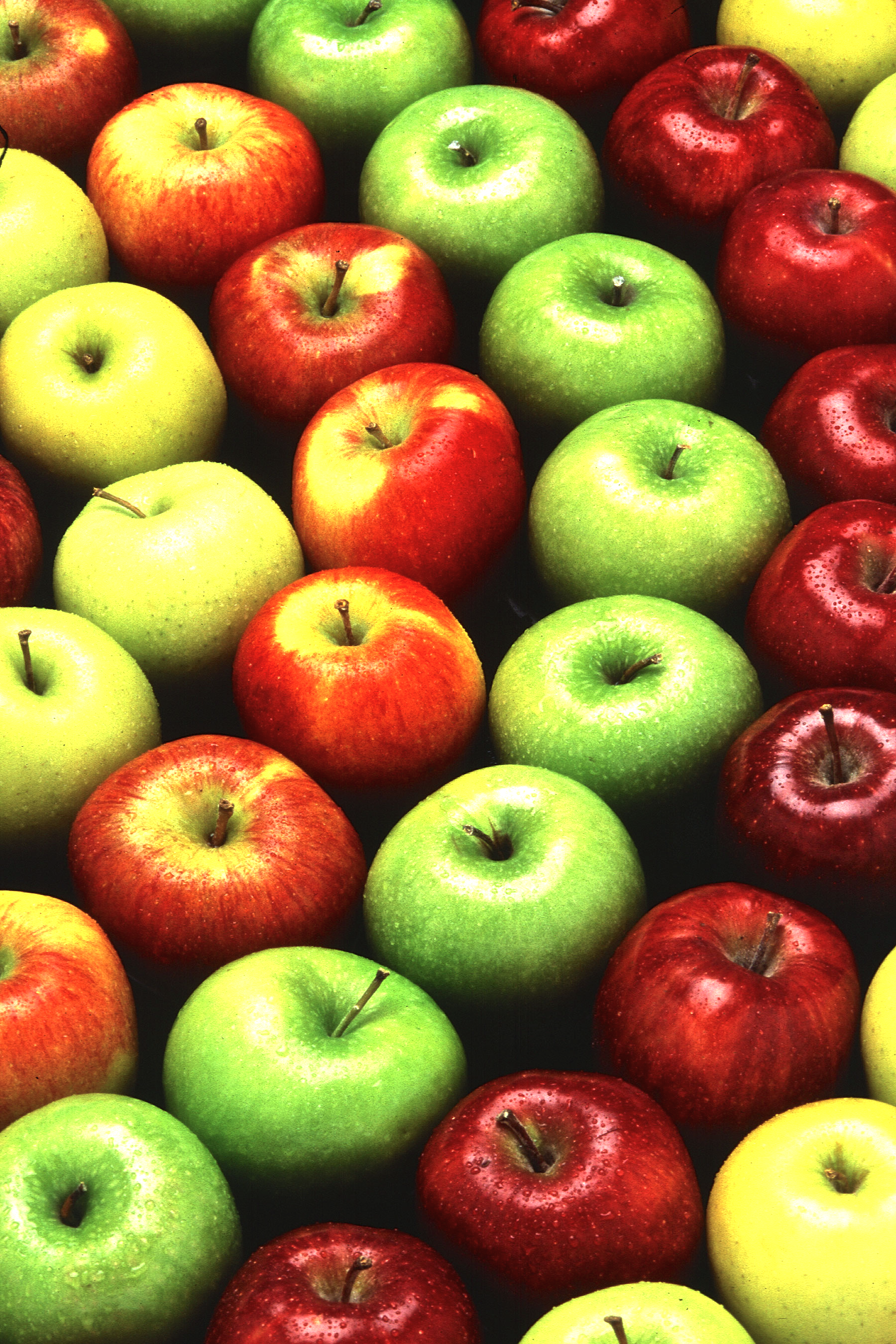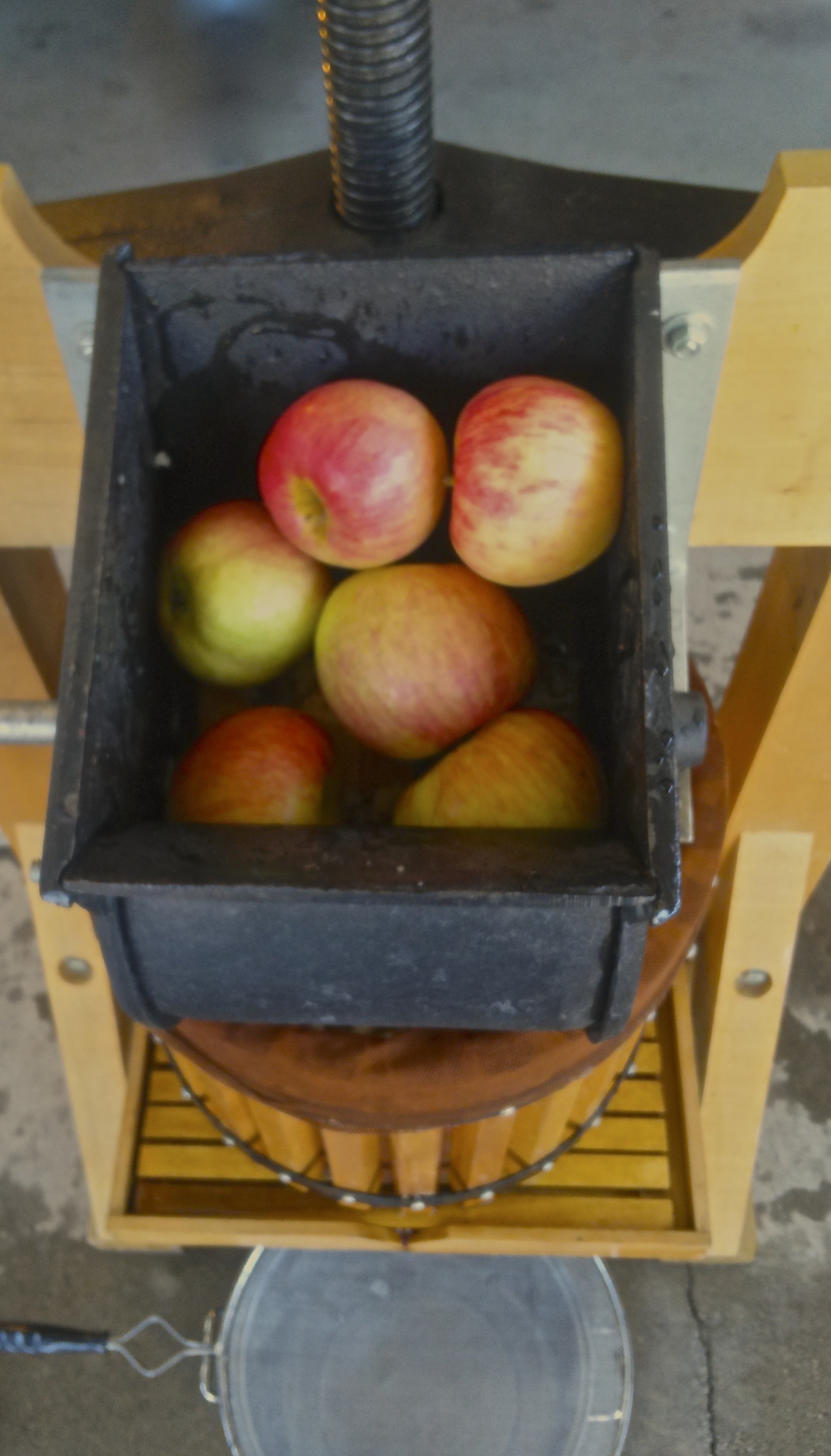Apple Cider Harvest: A Guide
by Kimberley Thompson, Tastemaker in Residence
One of my favorite things about fall is the apple harvest at my brother's orchard, hugely labor intensive, extremely weather sensitive, and achingly tiring on our 50 to 60 year old bodies. Given all the above, one might wonder if I have truly thought out what it means to be a "favorite thing." Hu-yup. I have and it is! Favorite "thing" status because I get out of doors standing in the bounty of the trees, usually with my sister and/or brother and always with my sweet dog. I can snack on apples at will deciding which shall be my "new" favorite, dreaming about what I will bake and I know that at the end of each day after sorting, grading and bagging the assorted varieties, Mark grows, we will press cider!
Cider, nectar of the gods, ambrosia on parched throats, liquid gold to be squirreled away for the coming long winter.
I know many of my friends roll their eyes when I gab on about pressing."How hard is it? You squish apples." Sounds easy enough. And it can be IF you follow a few rules.
RULE #1
Understanding the "Appleness of Apples." There are reasons that there are 100s of varieties of apples, not all of them are wonderful, not all universally... "a rose is a rose is a rose." Types of apples and different localities/seasons make for very distinct apples uses. Some rock for eating out of hand and snacking, others are for baking, some for canning and others for juicing. Some ripen early in the heat of summer, some mid season and others need the chill of fall nights to set their flavors. Even the length of time they stay viable after picking can range from a month to several months.
The following apple varieties are my personal favorites:
- Chestnut crab, a small ugly crab apple but one of the best tart mid season apples in my opinion. Fabulous for eating, sauce, pie and keeping. Introduced 1949. Mid-season.
- Sweet Sixteen, a bright cherry flavor, crisp and juicy. Introduced 1977. Mid-season.
- Haralson, holds its slice/shape. Great for sauce and cooking with complex tartness. Not a pretty apple. Introduced 1922. Late season.
- Frostbite, a cider apple. Skin/peel russets easily, but do not let its looks fool you. Tart and sweet. Introduced 2008. Late season.
- Fireside, my mother and grandmother's all-time favorite! Holds its slice, perfect for pies, crisps and sauces. Introduced 1943. Late season. Note:to improve flavor mix with Keepsake and Haralsons.
- Keepsake, just as it's name implies an excellent keeper. Introduced 1978. Late season.
- Prairie Spy, look for the old variety, not the one with "red" in its name. Introduced 1940. Late season.
- Bonnie Best large and tart. My favorite for baking, pies and sauce. Late season.
RULE #2
Always use a blend of apple varieties for optimum flavor. I usually use 3, if not 4 so the flavors and textures really meld into "apple."
RULE #3
Never cook, bake or press any apple that has the word "Delicious" in its name. Fine for eating out of hand or in salads.
RULE #4
Cleanliness is paramount.
Clean press and all components with hot, soapy water...rinse twice with hot water that has a small amount of bleach (1 TBSP) in it. Rinse one last time with plain, hot water.
Set up grinder and catch basin/screen. Make certain you have something under the spout to hold the juice when it comes out. Note:there is no way to stop the juice from flowing once you start pressing! So have the screened container in place first. (This is experience talking!)
Wash and rinse apples. We use the less than perfect apples for cider...no bird pecks or worm holes or rotted flesh..but scab and russeting is okay. Do not peel or core. Mix all the varietals together. Drop into hopper a couple at a times so as not to jam the hopper. Turn the crank evenly, a super upper arm workout!
Push down ground apples in the bag, adding more to the hopper until the mesh bag is full. Then start to press. Keep turning presser bar until it will not go any further. Unwind screw, remove bag, empty the flattened apple bits out and replace bag. Start all over again until you run out of apples or arm strength.
Watch your catch container so it does not over flow (again, voice of experience!). I then take the cider and re-strain it into brand new gallon plastic jugs. If you are going to freeze your cider, as I do, fill to 4 inches from top, to allow for expansion.
If you are going to drink your cider fresh, which I also do, keep it refrigerated for only 3 to 4 days. And be forewarned, fresh cider is a natural stimulant for the digestive system, do not over imbibe. Again, sadly, the voice of experience.
Enjoy the liquid harvest of the orchard, head's up, cooking with fresh cider is addictive. Someday I will tell you about my cider/herb/butter reduction for ham. Just the thought of it makes me salivate! And plan...



